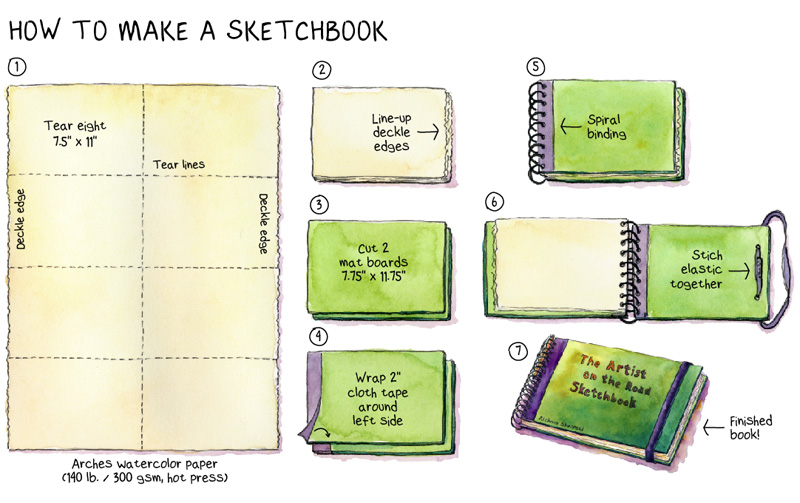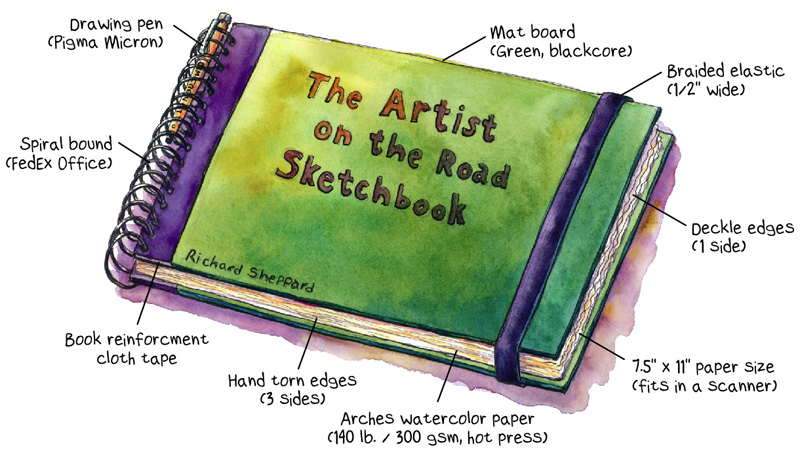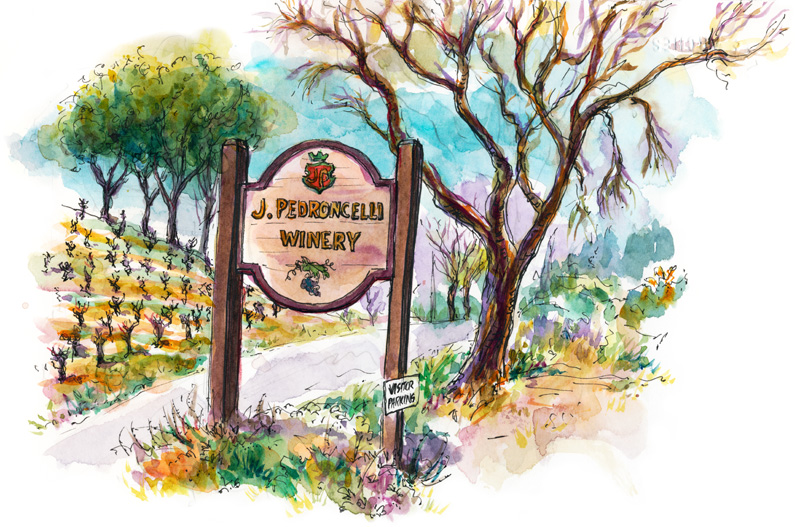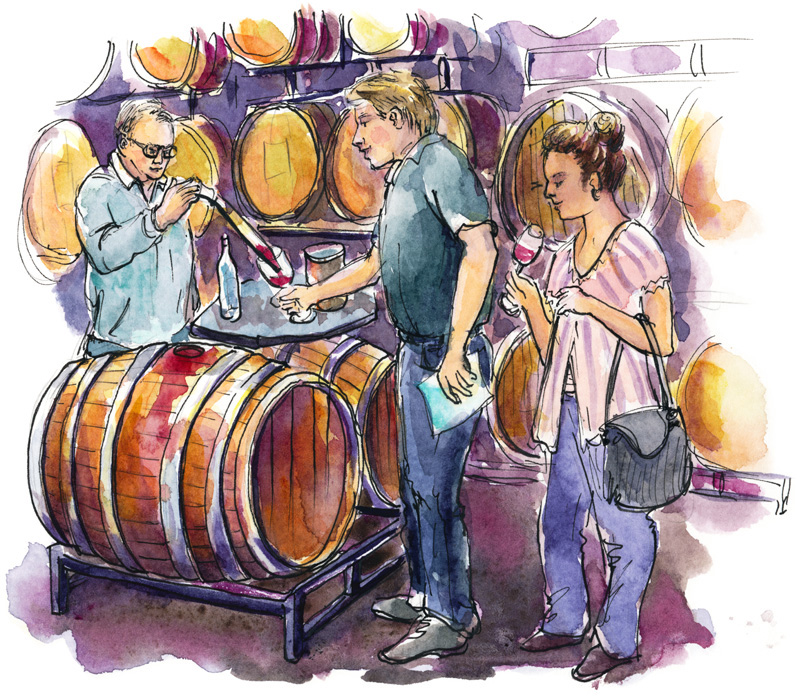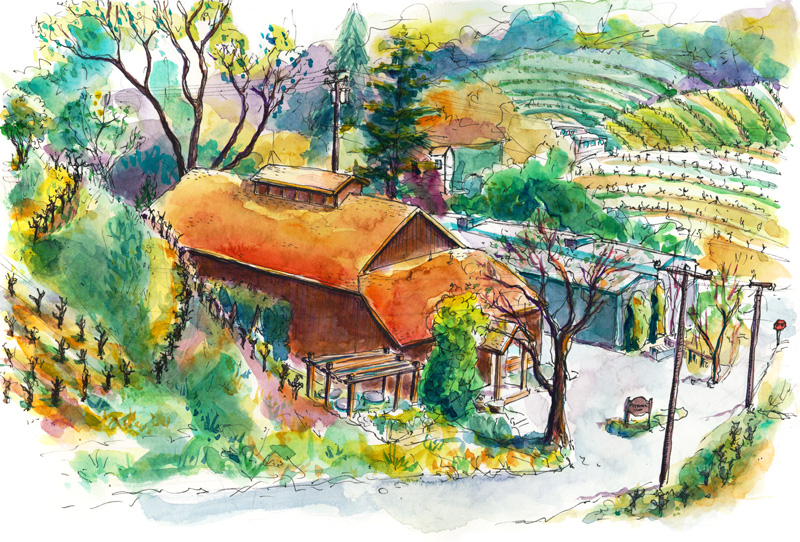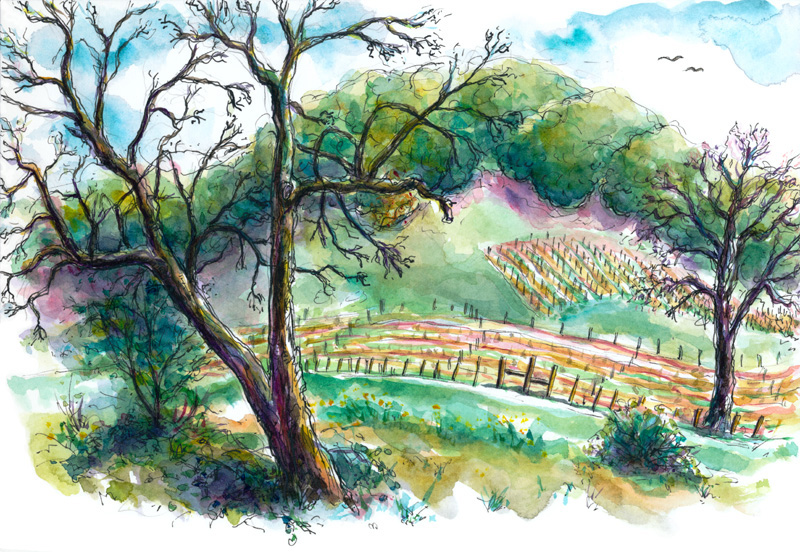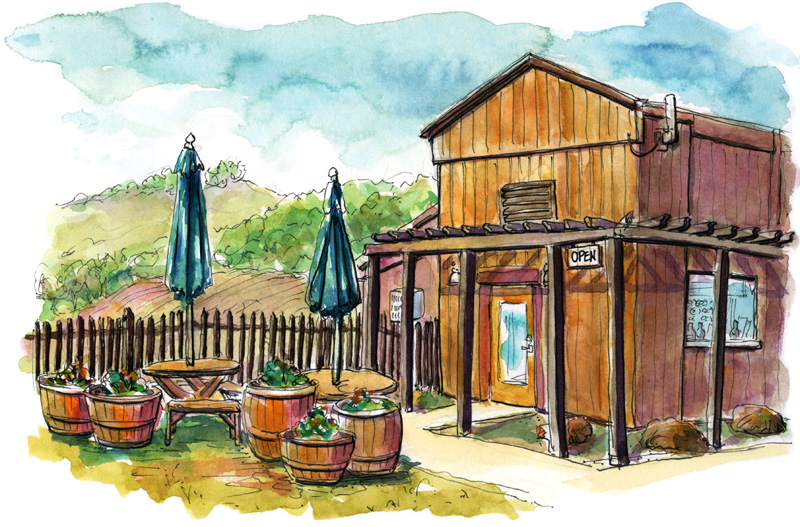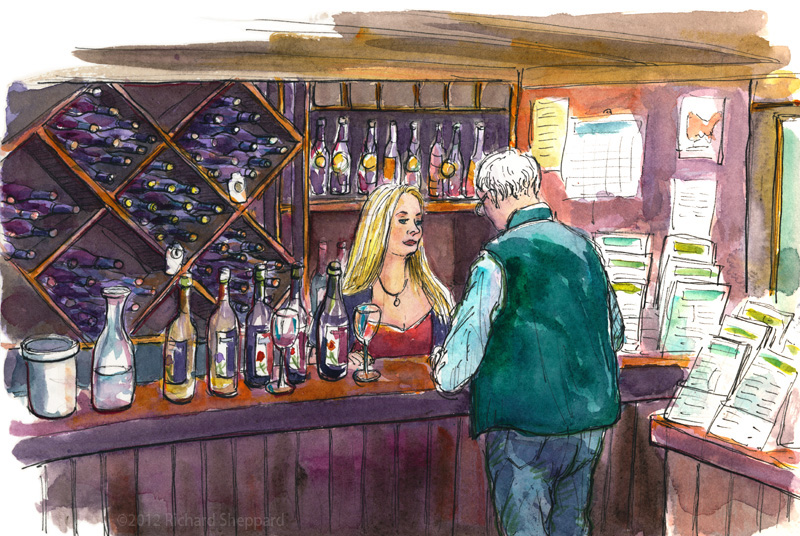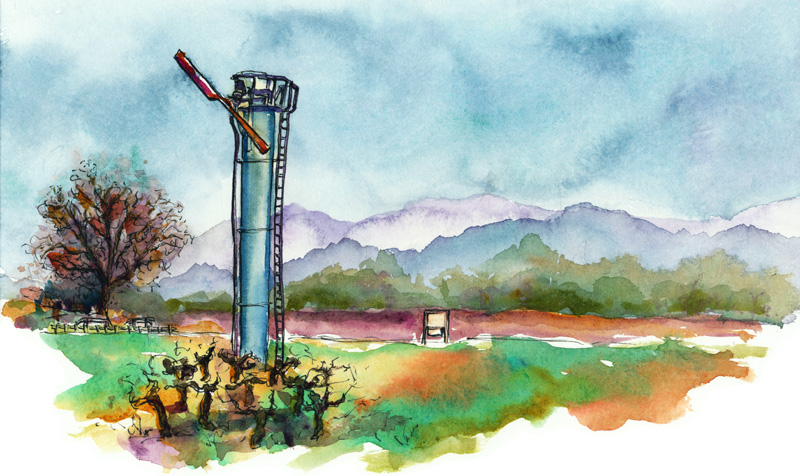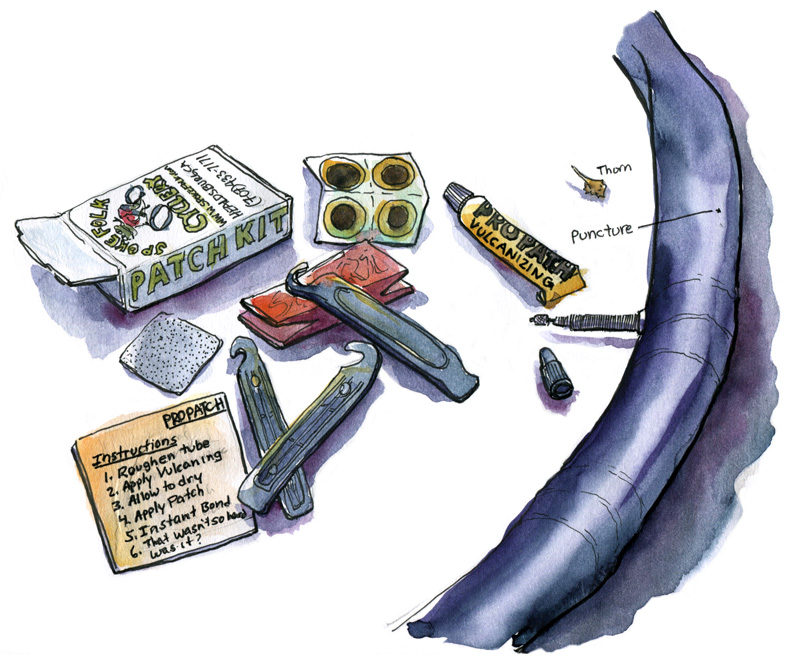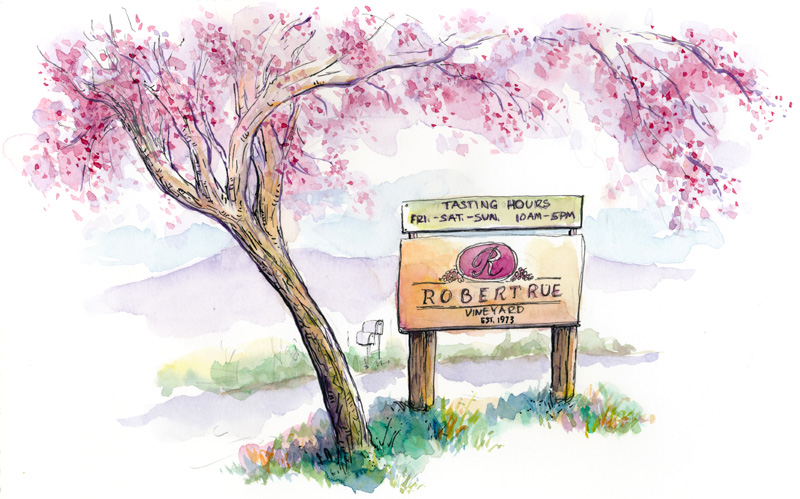
I sat under a row of blossom-covered plum trees, having set out to sketch Robert Rue Vineyards’ road sign. Drawing in pencil, then ink, I fleshed out the tree branches and the sign on paper. Pink petals fell gently around me like snowflakes, diverting my attention as I watched them float to the ground.
Plums were once a farming staple in this area before wine grapes became the favored crop. In the earlier part of the twentieth century, Healdsburg was called The Buckle of the Prune Belt. Nowadays, prunes are called dried plums, and plum trees are mostly used to beautify roadways, while the actual fruit orchards have moved to California’s central valley or Mexico. But even still, the taste of a juicy, ripe plum can be irresistible, especially when accompanied with local goat cheese. The taste and aromas of plums are also common descriptors of red wines.
A flurry of petals caused by a gust of wind fell on my sketchpad and water cups, signaling it was time to move on. I finished the sketch, painting green winter grasses and thin washes of color that defined the background. After packing my supplies, I headed down the driveway to the winery.
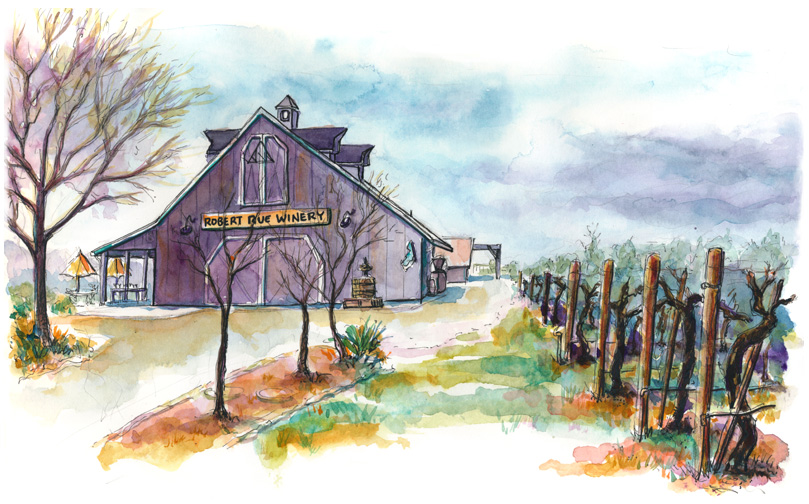
Today was the second and final weekend of The Wine Road’s Barrel Tasting Event. I’d read great things about Robert Rue’s Zinfandel and thought this would be a good time to visit. As I approached the tasting room, the aroma of fermented fruit drifted out the doorway.
Standing behind a table stacked with wine glasses, Carlene Rue smiled and welcomed me as she distributed glasses to arriving guests. I spoke to her about my intention to sketch the winery and she responded enthusiastically. Taking a break from her hostess duties, Carlene guided me on a quick tour of Rue’s new production facility, pointing out various pieces of wine making equipment: crusher, de-stemmer, and fermenting tanks, all of which would be idle until fall harvest.
Mentioning her family’s love for antiques, she pointed out a vintage bottling machine and a manual grape crusher. A 1941 beer truck from San Francisco sat parked nearby, loaded with used wine barrels. Behind the truck where the winery began in 2001 stood an old but well kept barn. With a newer facility now in use, the barn makes a great storage space.
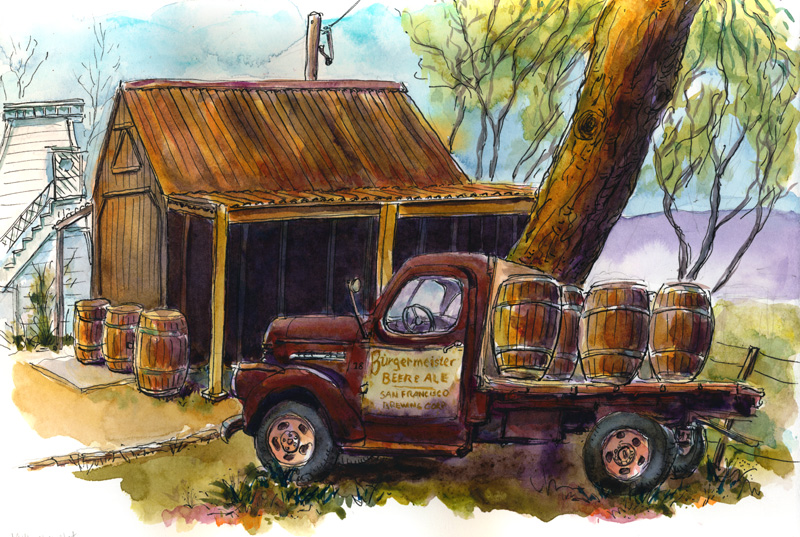
Carlene invited me to roam and sketch whatever appealed to me and excused herself to help staff manage the event. I found a seat on the patio with a view of the grounds and antiques. Over the next couple of hours, I sketched the barn and truck, along with a drawing of the intricate mechanics of the bottling machine.
Then I headed into the winery where Carlene introduced me to her husband Robert (Bob) Rue. He was aware that I was sketching the winery and presented an overview history of the Rue winemaking operation. He and Carlene purchased this 10-acre, 100 year old vineyard in 1973, and sold their grapes to local wineries. But in 2001 the Rues’ dream of producing their own wine became a reality. While listening to Bob, I drew him in my sketchbook.
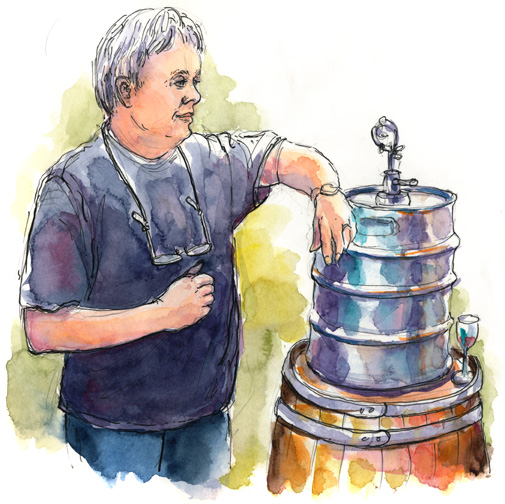
Bob then beckoned me outside for a stroll along the vineyard. As we walked, a cool breeze kicked up and I buttoned my jacket. The vineyard is a field-blend of predominantly Zinfandel, interplanted with Petite Sirah, Carignane, and Alicante Bouschet grapes. The blended wine from these vines has garnered many awards over the past decade.
This year, Bob said, there is concern about winter’s warm temps, which have caused an early bud break. When this occurs, farmers are haunted throughout spring by the specter of an early frost. Bob relayed that the last several years had been fraught with cold, wet springs, cooler summers, and heavy rains during harvest. None of these weather conditions is conducive to an easy growing season. The weather was so unfavorable in 2010, in fact, Bob said he lost 90% of his crop. Zinfandel grapes, with their tight berry clusters, leave little space for the sun’s warmth to inhibit mildew growth, and are in particular danger during pre-harvest rainstorms. Once mildew sets in, the berries begin to rot, making them unfit for wine. But despite a cooler summer of 2011, the Rues did well, pulling in all their fruit before bunch rot could set in.
As Bob spoke, rain clouds darkened the western sky, so we agreed to move the conversation inside. Upon my entering the barrel room, wood and wine danced around my nose, teasing me to have a taste.
Bob introduced me to Rue Winemaker, Dan Barwick, as he provided barrel samples of their 2011 Zinfandel to tasters. Dan has been winemaker since 2008 and before him Carol Shelton provided the young winery its first vintages. I watched Dan fill the wine thief and empty its contents into my glass. This Zinfandel, I learned, had been oak-aged for less than three months. I swirled the wine in my glass and held it up to my nose. I noticed aromas of bright plum and blackberry fruit, detecting little to no evidence of the oak barrel. The fruit flavors were so fresh, it tasted as though newly-picked plum and blackberry juice had been added to the aging wine. As I closed my eyes, the plum essence reminded me of the trees I’d sketched earlier, and images of those delicate pink flowers came to mind.
I asked Dan if I could compare the barrel sample with a finished wine, and in answer, he provided two more glasses, one containing 2007 vintage Zinfandel, and the other 2008. This side-by-side comparison of wines from the same vineyard can prove quite instructional, and I began to compare and contrast these three. The two finished wines felt more full and round. Plenty of fruit was still in evidence, but there were other nuances that added complexity. The 2007 tasted of blackberry, raspberry, and spice with a touch of vanilla and rich oak. The 2008 held equal interest, with flavors of dark chocolate cherries, plums, and black pepper, along with a velvety chocolate mouth feel. Both finished wines were fuller-bodied than was the barrel sample, and they activated the full complement of my taste buds. The barrel sample was loaded with fresh, mouthwatering fruit and absent of the oaky backbone of the other two, but I imagine that this young wine would mature with great nuance and complexity as it ages in the barrel.
Lastly, I tried the 2011 Sauvignon Blanc. Dan qualified it as fermented only in stainless steel. Turning the knob on a small stainless steel tank, he poured an ounce of light golden liquid. I swirled it in my glass and held it to my nose. Redolent of citrus fruits, peaches, flower blossoms, and a hint of fresh grass, this wine’s perky acidity made my mouth water. It was so appealing, I requested a second taste. Dan looked pleased and said the Sauvignon Blanc was ready to be bottled.
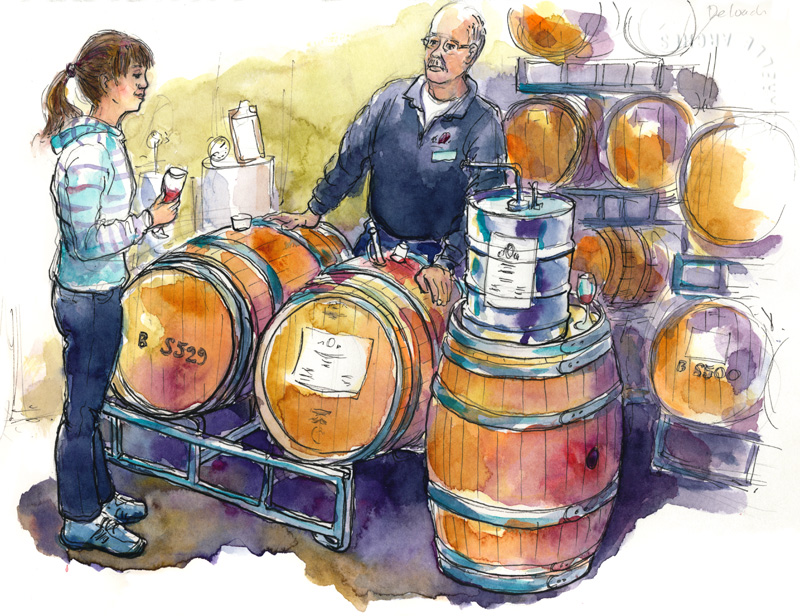
Having tasted all the wines, I pulled out my sketchpad and stepped back from the barrels. I often find it difficult to sketch people, especially in groups. But today I got lucky as Dan held the same posture leaning on the barrels, which provided enough time to complete a sketch. Tasters, on the other hand, moved so often that I ended up drawing one figure as a composite of several. It’s a representation of the period of time I spend drawing, with Dan as the constant.
With the day drawing to a close, I packed up my gear and found Carlene and Bob in the tasting room with visitors. I thanked them for their hospitality and the opportunity to spend the day drawing their winery. After saying goodbyes, I collected a couple of bottles of the 2007 Zinfandel and headed into the moody spring weather, toward home.
